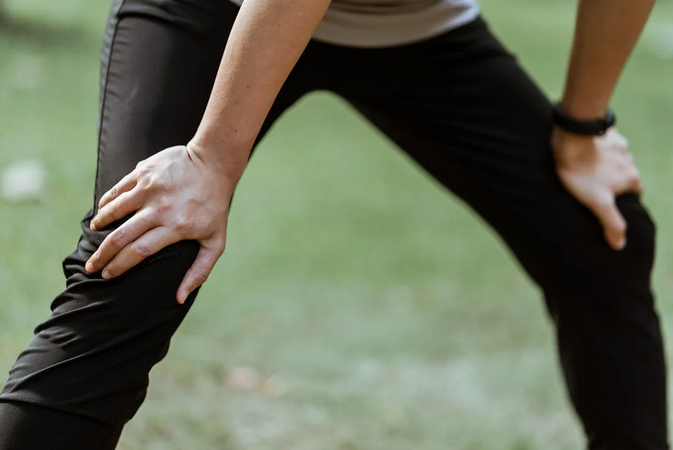Walking. It’s something we all do, yet it often flies under the radar as a legitimate form of exercise. Many people overlook its benefits in favor of high-intensity workouts or trendy fitness classes. But what if I told you that walking could be one of the most effective and underrated ways to boost your health?
With just a pair of comfortable sneakers, you can unlock a great treasure trove of physical and mental advantages. So, even if you’re strolling through the park or taking a brisk walk around your block, this simple activity packs more punch than many realize. Here is how walking can transform your well-being in ways you might never have considered.
Heart Health
Did you know that a 30-minute walk a day can have a major impact on your heart health? It strengthens the heart muscle and repairs circulation, letting blood flow way more freely throughout your body. As you walk, your heart pumps faster, increasing its efficiency.
This aerobic activity helps reduce blood pressure and lowers cholesterol levels over time. Plus, walking is accessible for everyone, regardless of fitness level. You don’t need fancy equipment or a gym membership—just step outside and start moving. The rhythmic motion also encourages better oxygen uptake in your lungs and promotes overall cardiovascular function.
Weight Management

Walking plays a significant role in weight management, often overlooked and even underestimated in favor of more intense workouts. It’s an accessible activity that can easily fit into your daily routine. Burning calories doesn’t always require high-intensity sessions at the gym.
A brisk walk around your block or local park can effectively contribute to calorie expenditure. The key is consistency. As you incorporate walking into your life, you’ll notice improvements not just in physical appearance but also in overall health. Even moderate walks after meals can aid digestion and prevent weight gain.
Joint Protection
Walking is a gentle way to keep your joints healthy. Unlike high-impact exercises, it puts less stress on the knees, hips, and ankles. This makes it suitable for people of all ages. In fact, regular walking can improve joint flexibility and strength. Walking helps keep the synovial fluid that lubricates your joints in check. Staying mobile is key to avoiding stiffness over time.
Moreover, walking promotes circulation in surrounding muscles and tissues. Improved blood flow aids in delivering nutrients essential for joint health. For those with arthritis or other conditions affecting mobility, walking serves as an accessible option. It’s low-risk yet highly effective at maintaining overall physical function without exacerbating pain or discomfort. Making this simple activity a daily habit provides long-term benefits while protecting your precious joints from wear and tear.

Mood Booster
Walking has a magical way of lifting your spirits. Just a short stroll can spark joy and reduce stress levels. When you step outside, nature surrounds you, offering fresh air and sunlight that invigorate the mind. The rhythmic motion of walking stimulates the release of endorphins, those feel-good hormones everyone craves. It’s almost like giving yourself a natural high without any side effects. Conversations flow easily while enjoying each other’s company in an unhurried setting. Even if it’s just for ten minutes around the block, you’ll notice a change in your mood. The simple act becomes therapeutic—a break from daily routines that often weigh us down.
With so many advantages packed into such a simple activity, walking should not be underestimated as an effective form of exercise. Whether you prefer leisurely strolls in nature or brisk walks around the neighborhood, integrating this habit into your daily routine can help you achieve lasting improvements in physical and cognitive well-being.…







 Rather than isolating lifestyle choices from the potential benefits of brain-boosting supplements, the true magic lies in their synergy. A comprehensive approach that combines nutrient-rich foods, regular exercise, quality sleep, stress management, social engagement, mental stimulation, and targeted supplementation creates a harmonious environment for cognitive health to thrive.
Rather than isolating lifestyle choices from the potential benefits of brain-boosting supplements, the true magic lies in their synergy. A comprehensive approach that combines nutrient-rich foods, regular exercise, quality sleep, stress management, social engagement, mental stimulation, and targeted supplementation creates a harmonious environment for cognitive health to thrive.
 One of the most common effects of low testosterone is fatigue. It can be caused by a number of factors, including decreased muscle mass, reduced blood flow, and an imbalance in hormones. Testosterone replacement therapy can help to improve energy levels by increasing muscle mass and improving blood flow.
One of the most common effects of low testosterone is fatigue. It can be caused by a number of factors, including decreased muscle mass, reduced blood flow, and an imbalance in hormones. Testosterone replacement therapy can help to improve energy levels by increasing muscle mass and improving blood flow. Maintaining optimal testosterone levels is essential for overall health. Low testosterone levels can lead to several health problems, including fatigue, muscle loss, weight gain, and decreased libido. Testosterone replacement therapy can help to improve overall health by increasing energy levels, improving muscle mass, and preventing weight gain.
Maintaining optimal testosterone levels is essential for overall health. Low testosterone levels can lead to several health problems, including fatigue, muscle loss, weight gain, and decreased libido. Testosterone replacement therapy can help to improve overall health by increasing energy levels, improving muscle mass, and preventing weight gain.
 If you’re trying to get pregnant, regular checkups can help you track your fertility. Your doctor can perform tests to determine whether you’re ovulating and diagnose any problems that may be preventing you from getting pregnant. They can also offer guidance on how to increase your chances of conception.
If you’re trying to get pregnant, regular checkups can help you track your fertility. Your doctor can perform tests to determine whether you’re ovulating and diagnose any problems that may be preventing you from getting pregnant. They can also offer guidance on how to increase your chances of conception.
 One of the main reasons why belly fat is so hard to lose is because it is active fat. This means that it produces hormones and other substances that can affect your metabolism and health. For example, visceral fat has been linked to insulin resistance, which can make it difficult to lose weight. Additionally, this type of fat also releases inflammatory substances that can contribute to diseases like heart disease and type II diabetes.
One of the main reasons why belly fat is so hard to lose is because it is active fat. This means that it produces hormones and other substances that can affect your metabolism and health. For example, visceral fat has been linked to insulin resistance, which can make it difficult to lose weight. Additionally, this type of fat also releases inflammatory substances that can contribute to diseases like heart disease and type II diabetes. Stress is another common reason why people struggle to lose weight, including belly fat. When you’re stressed, your body produces the hormone cortisol. Cortisol can lead to an increase in appetite and cravings for high-calorie foods. Additionally, it can also cause your body to hold onto abdominal fat.
Stress is another common reason why people struggle to lose weight, including belly fat. When you’re stressed, your body produces the hormone cortisol. Cortisol can lead to an increase in appetite and cravings for high-calorie foods. Additionally, it can also cause your body to hold onto abdominal fat.
 The modern approach to fats is to limit them as much as possible. However, this is one of the people’s biggest mistakes when following the keto diet. It will help if you eat enough healthy fats for your body to enter a state known as “ketosis,” in which it becomes efficient at burning fat instead of carbs for energy.
The modern approach to fats is to limit them as much as possible. However, this is one of the people’s biggest mistakes when following the keto diet. It will help if you eat enough healthy fats for your body to enter a state known as “ketosis,” in which it becomes efficient at burning fat instead of carbs for energy. Many people mistake relying too heavily on processed foods when following the keto diet. While it is ok to eat some processed foods, they should not make up the majority of your diet. Processed foods are often high in unhealthy fats, sugars, and additives. All of which can be detrimental to your health and interfere with the keto diet.
Many people mistake relying too heavily on processed foods when following the keto diet. While it is ok to eat some processed foods, they should not make up the majority of your diet. Processed foods are often high in unhealthy fats, sugars, and additives. All of which can be detrimental to your health and interfere with the keto diet.

